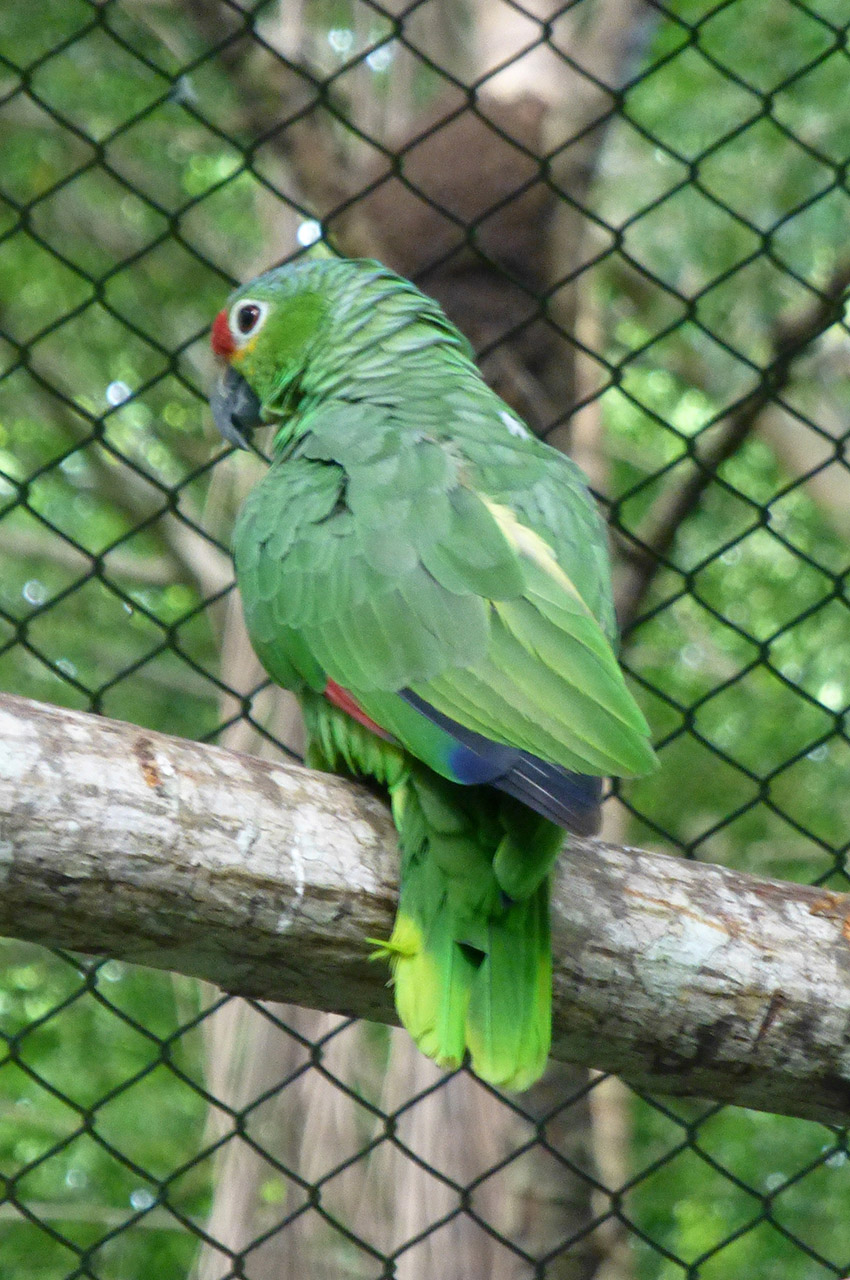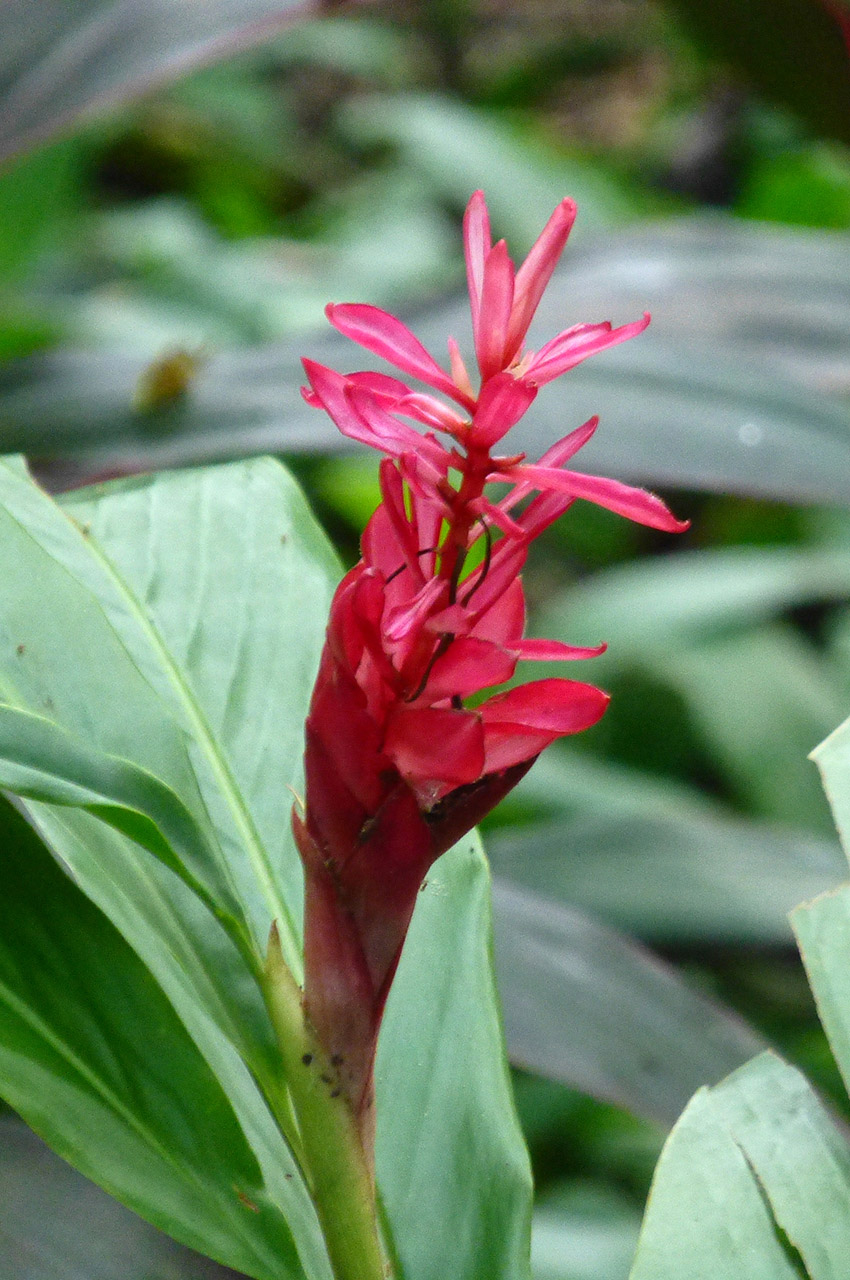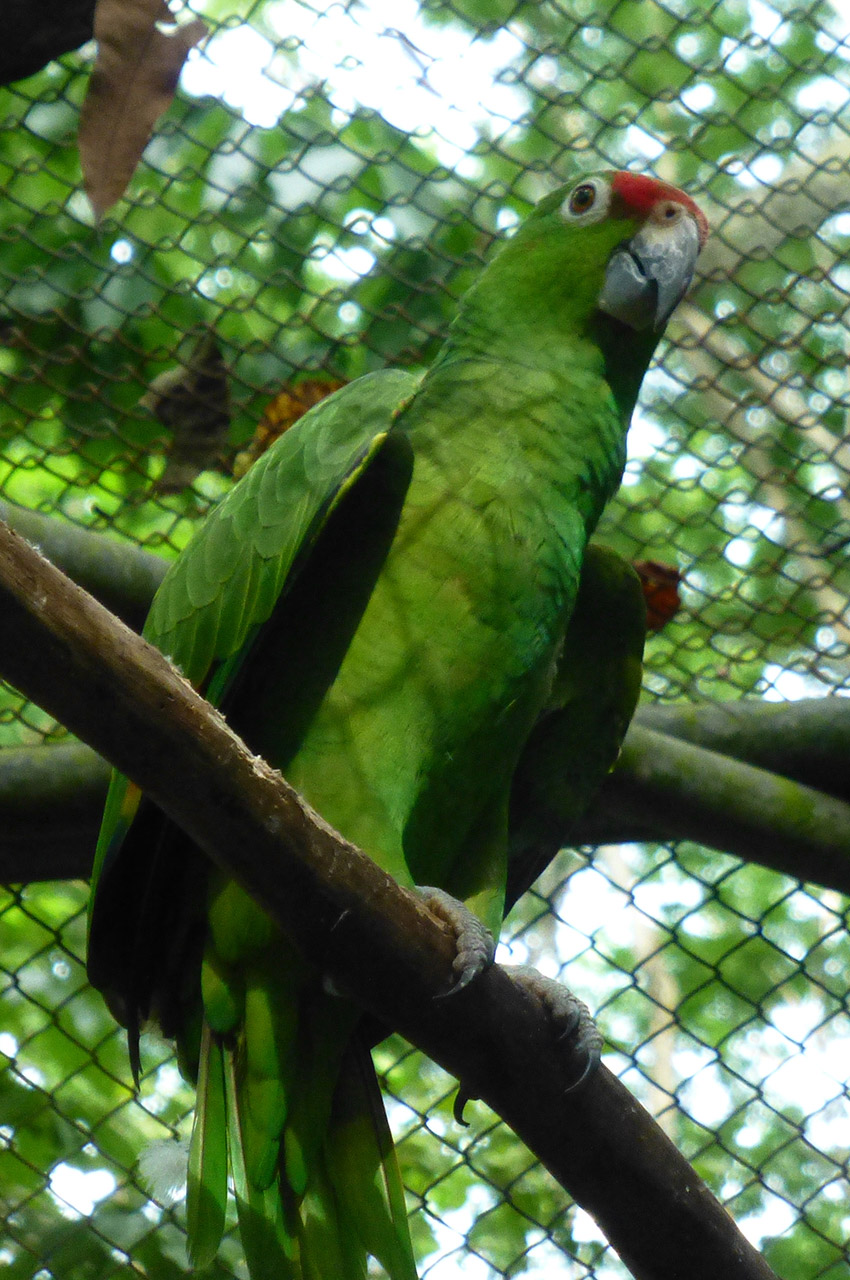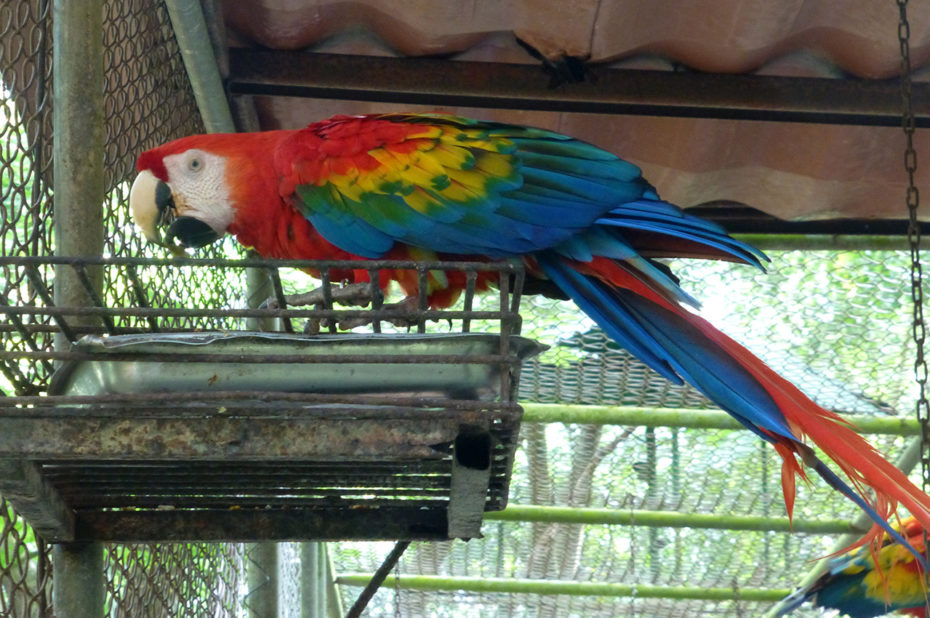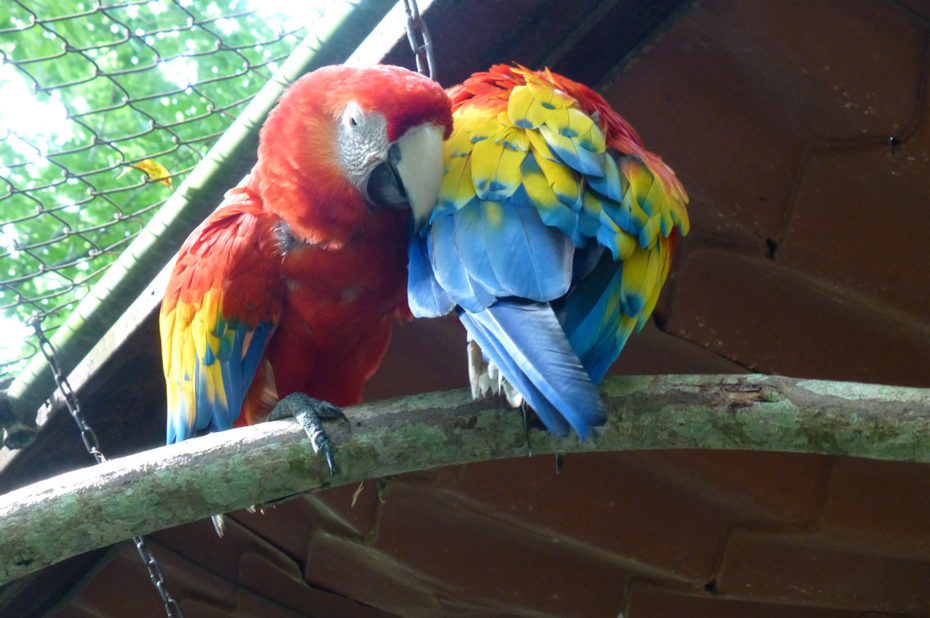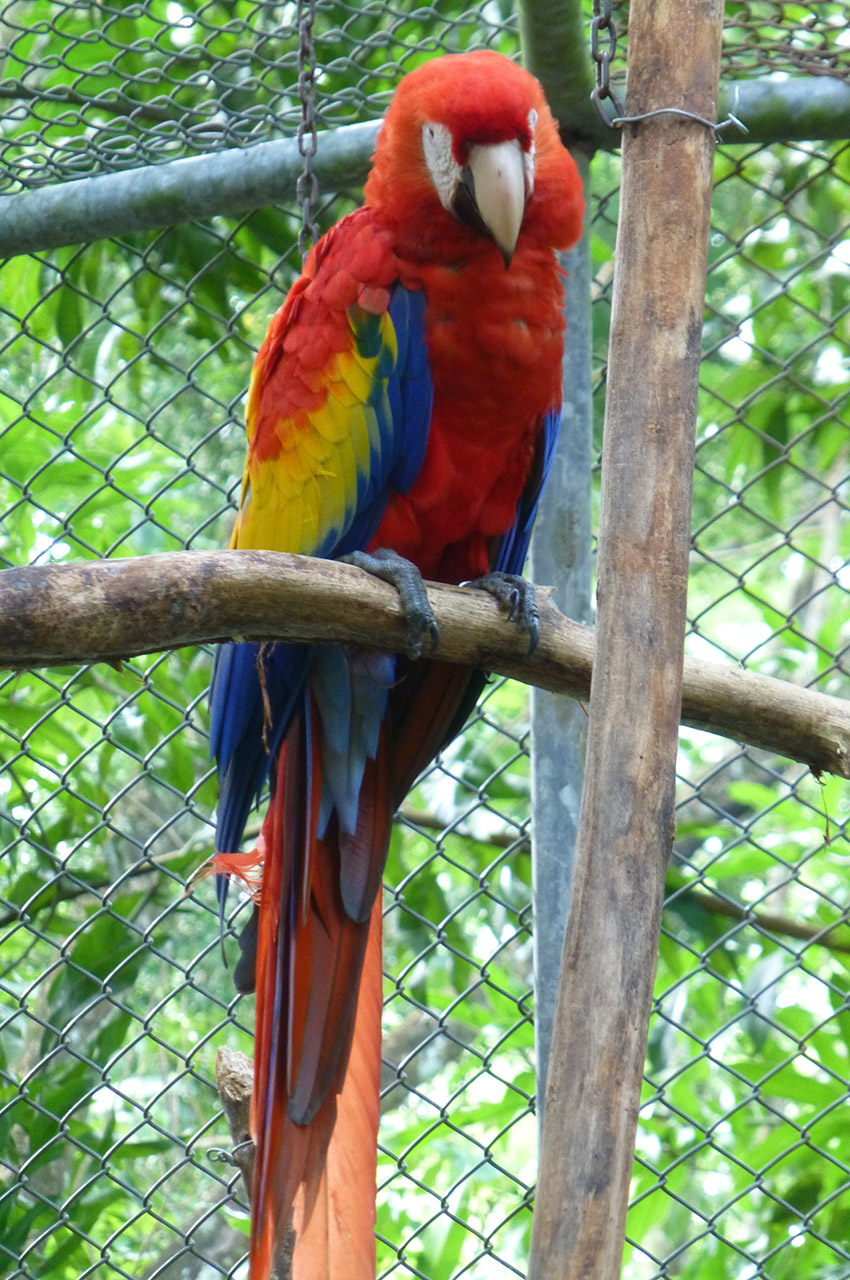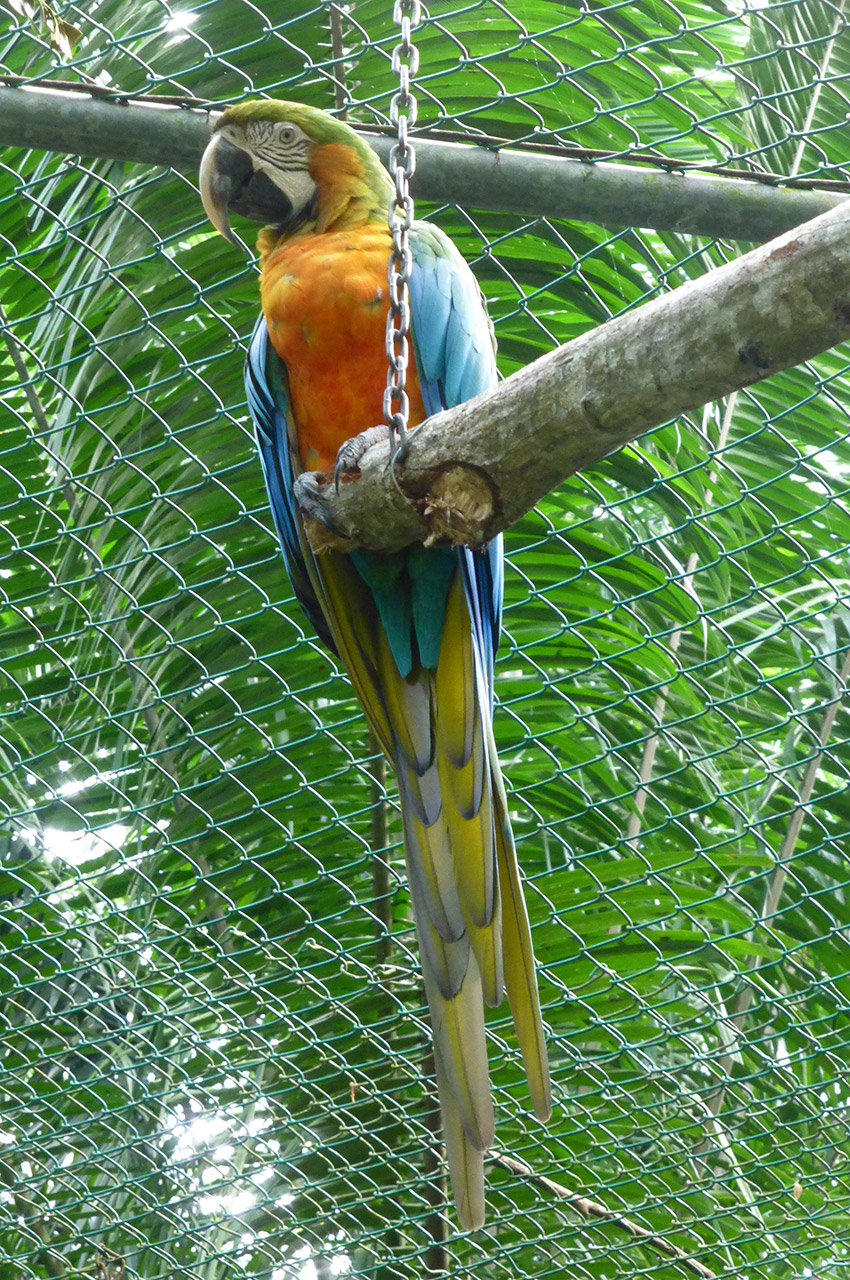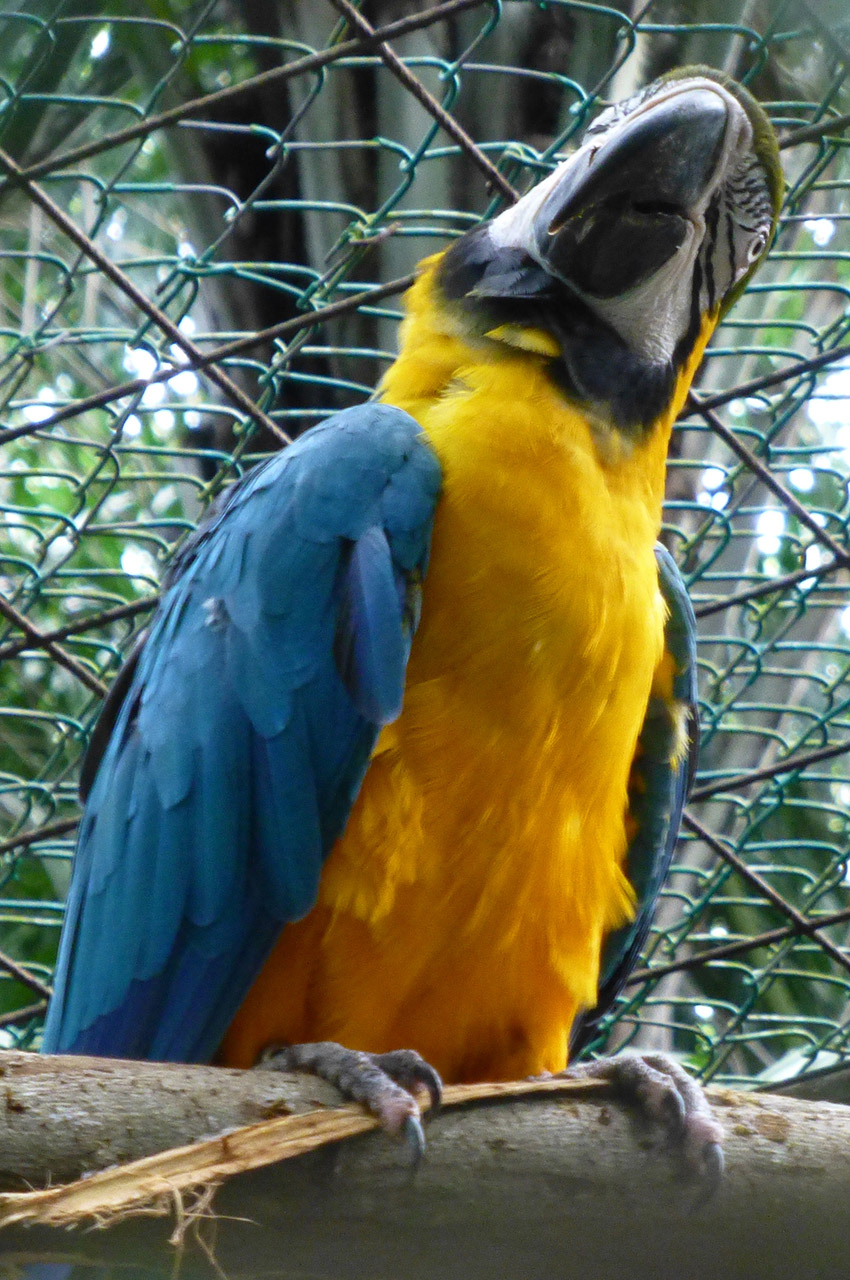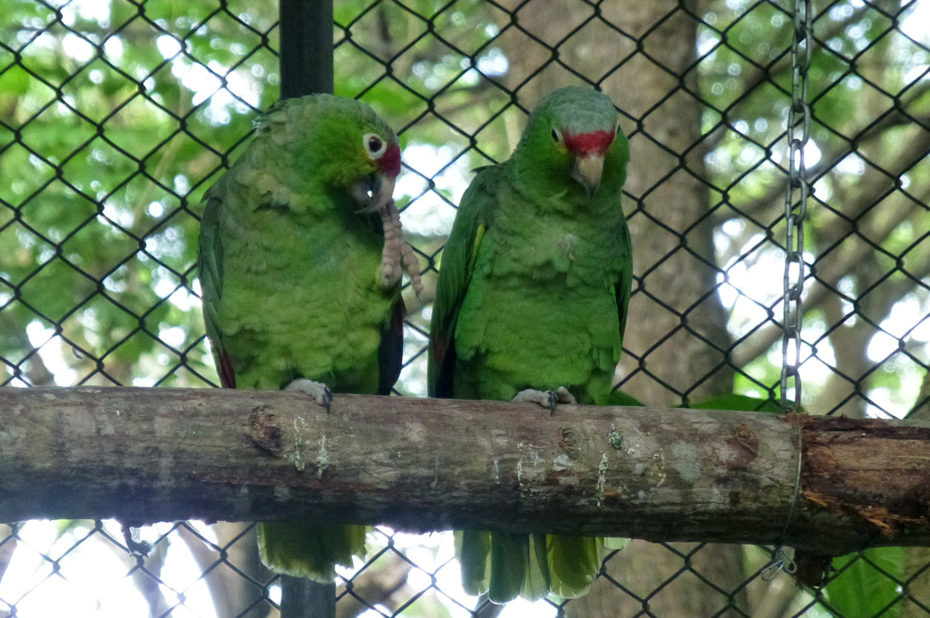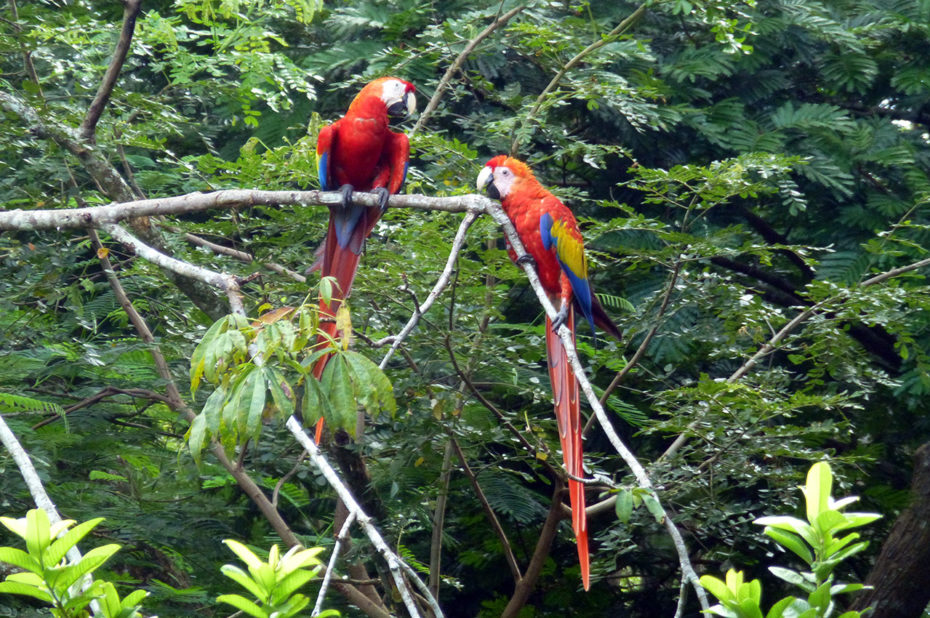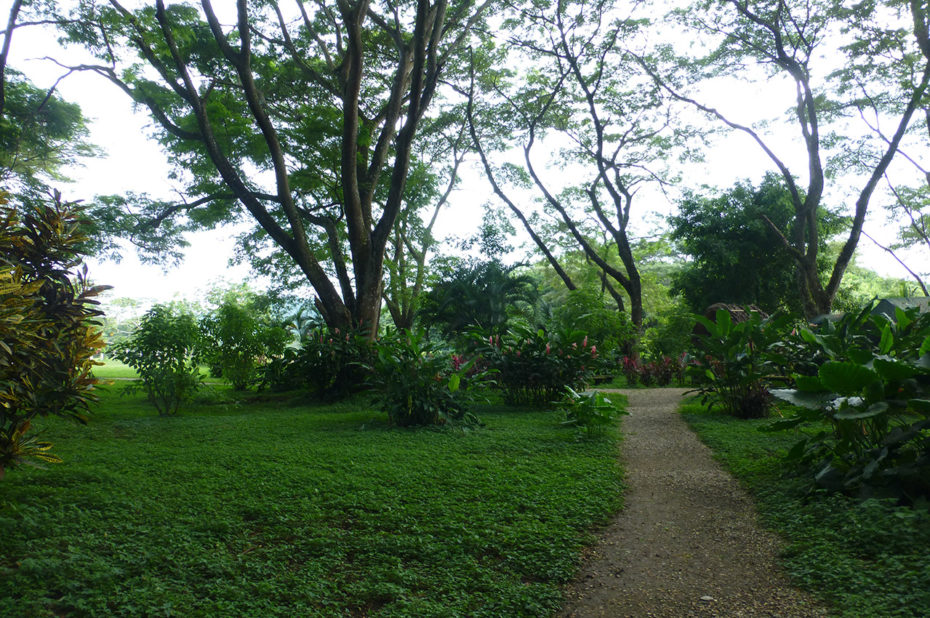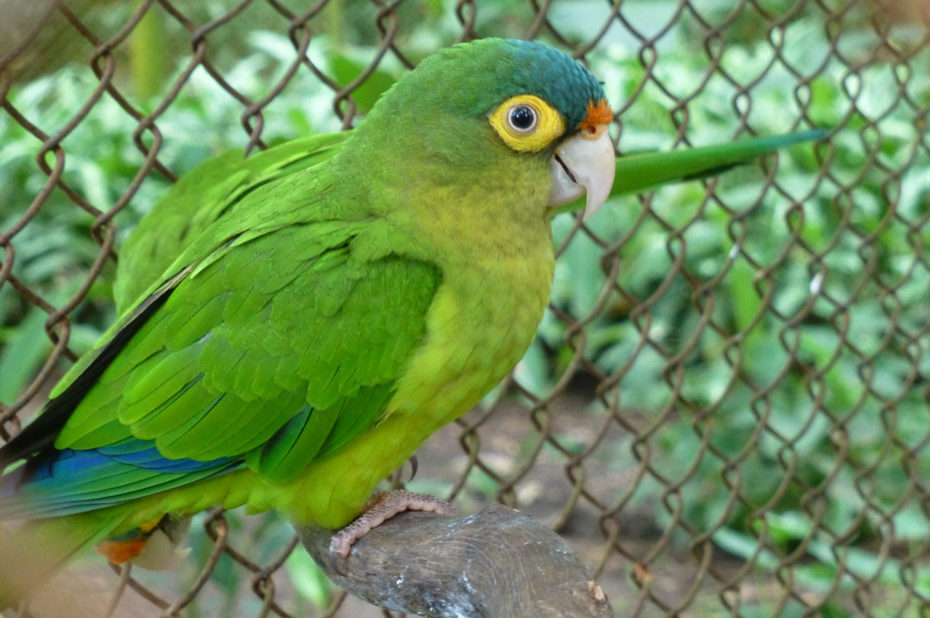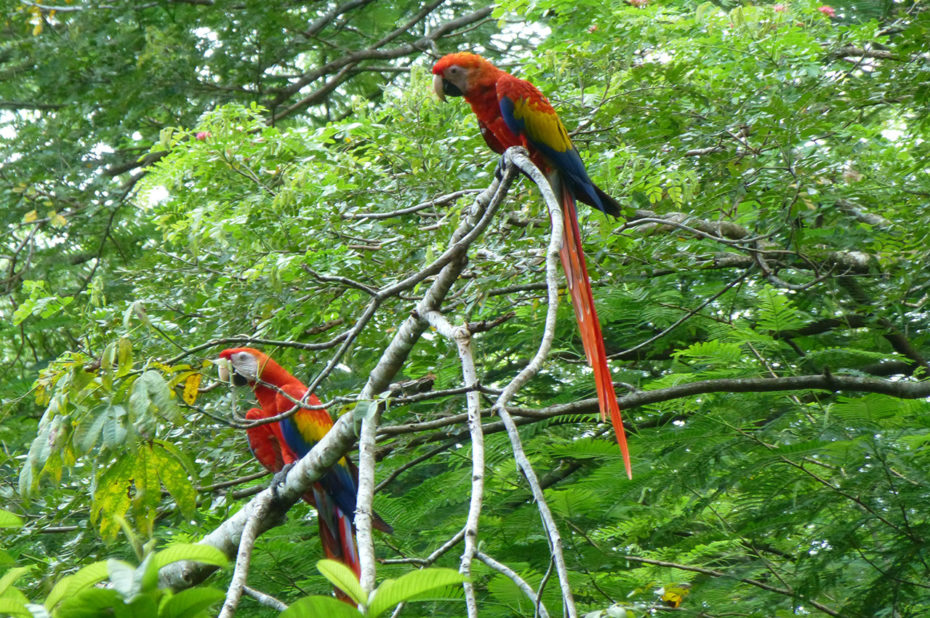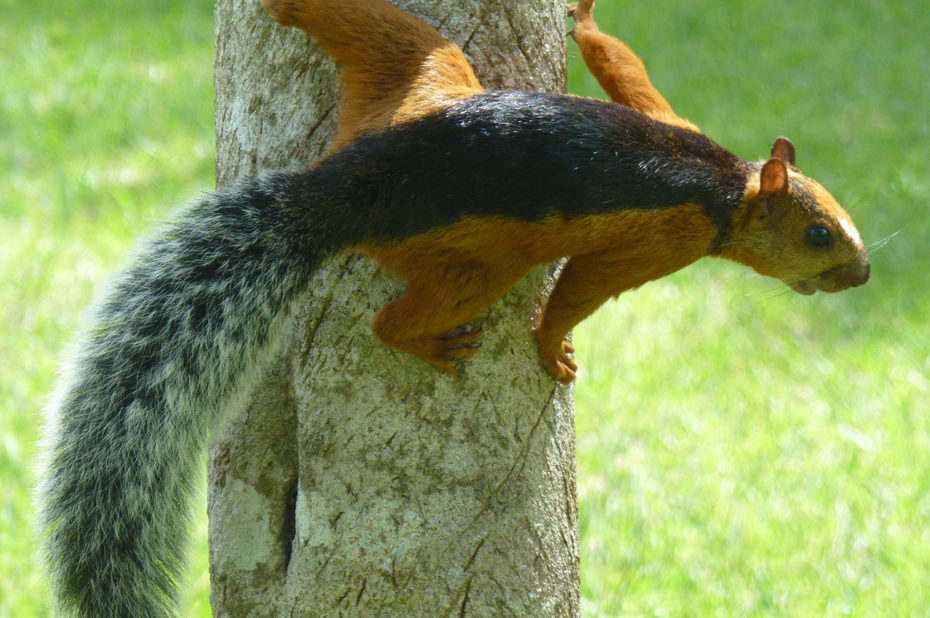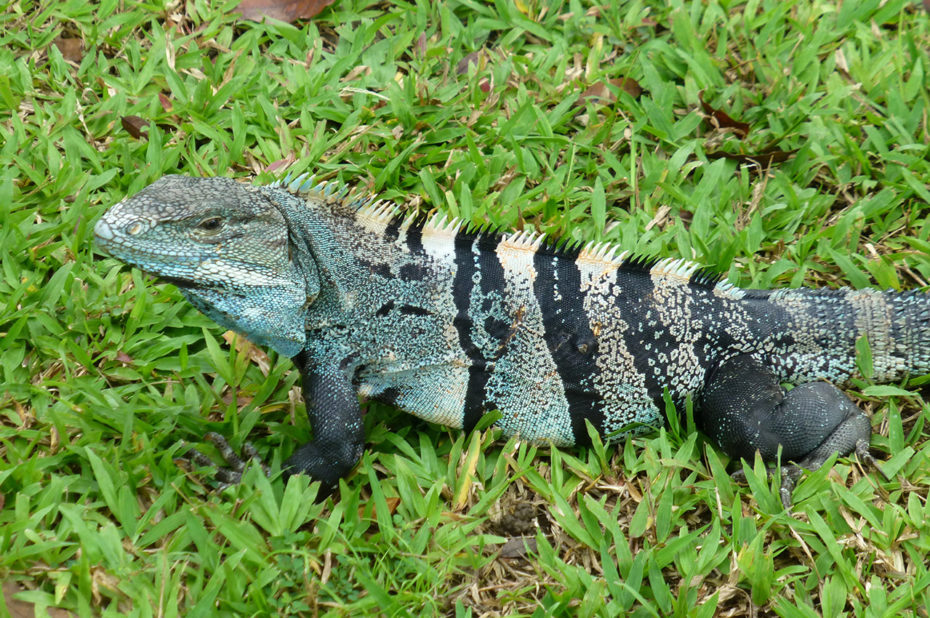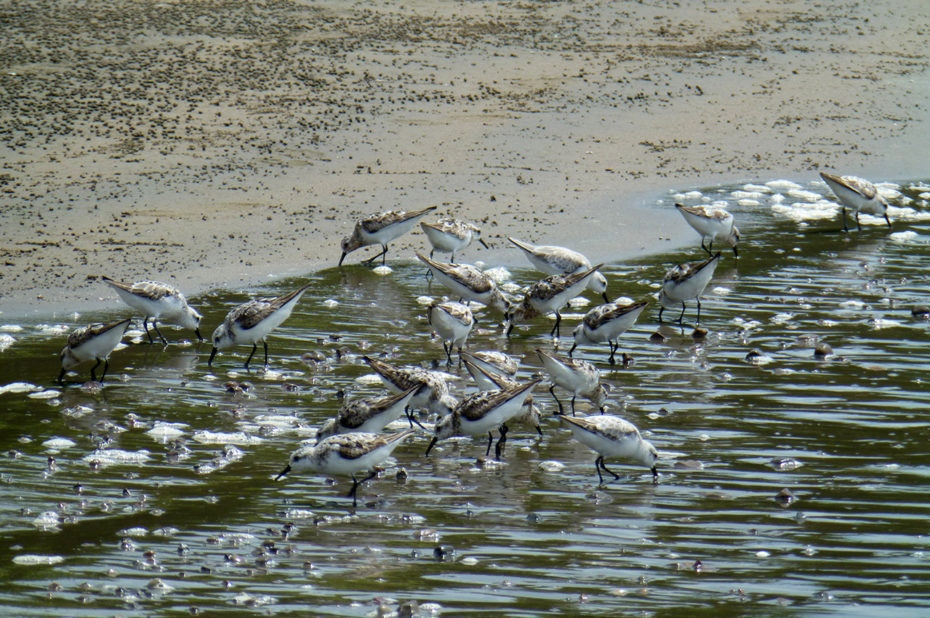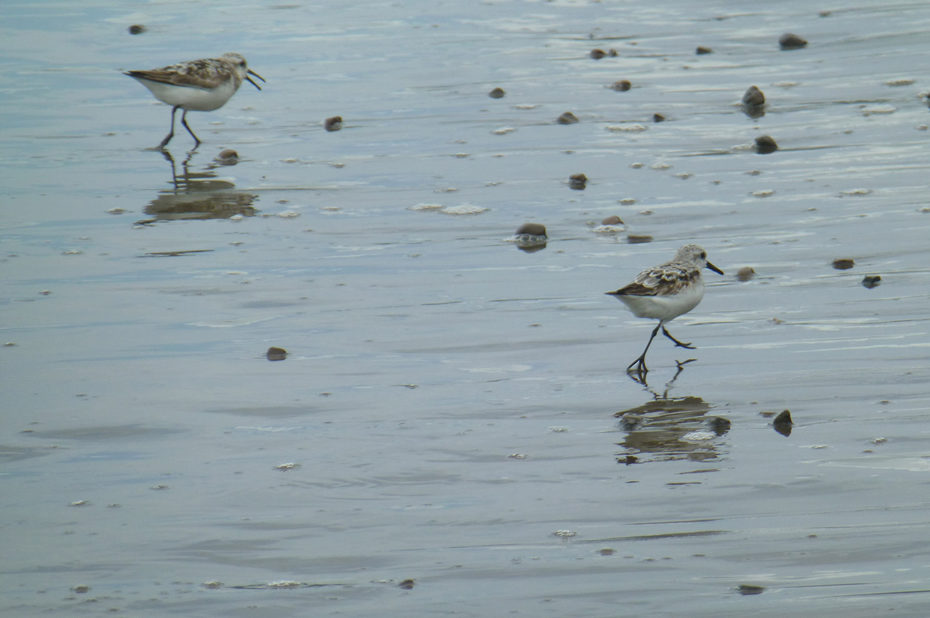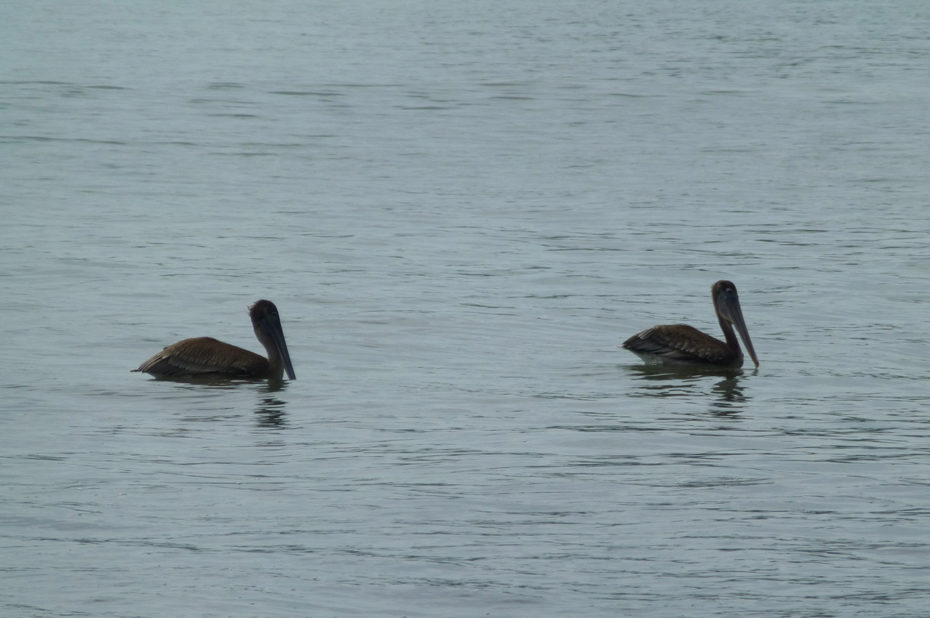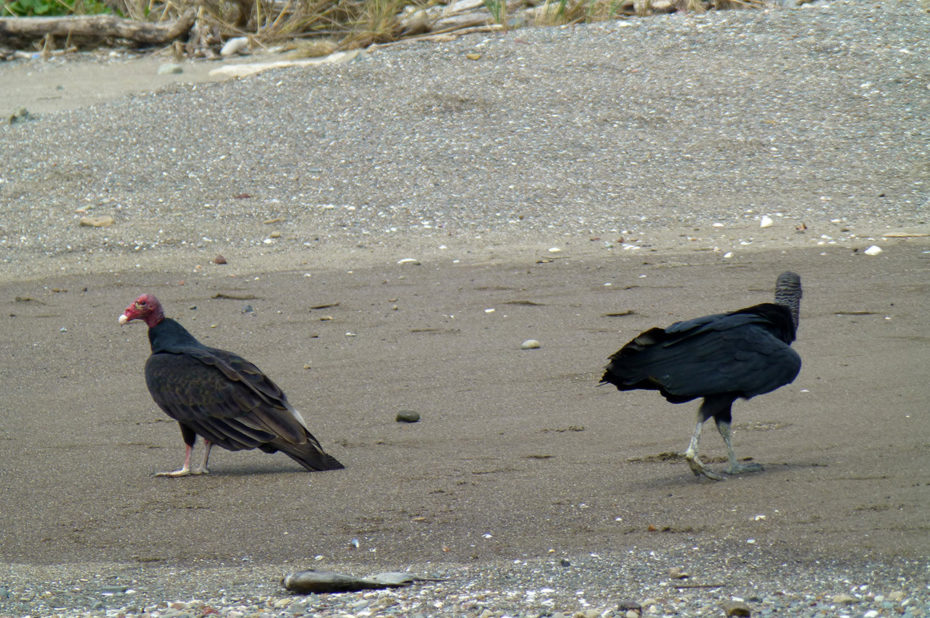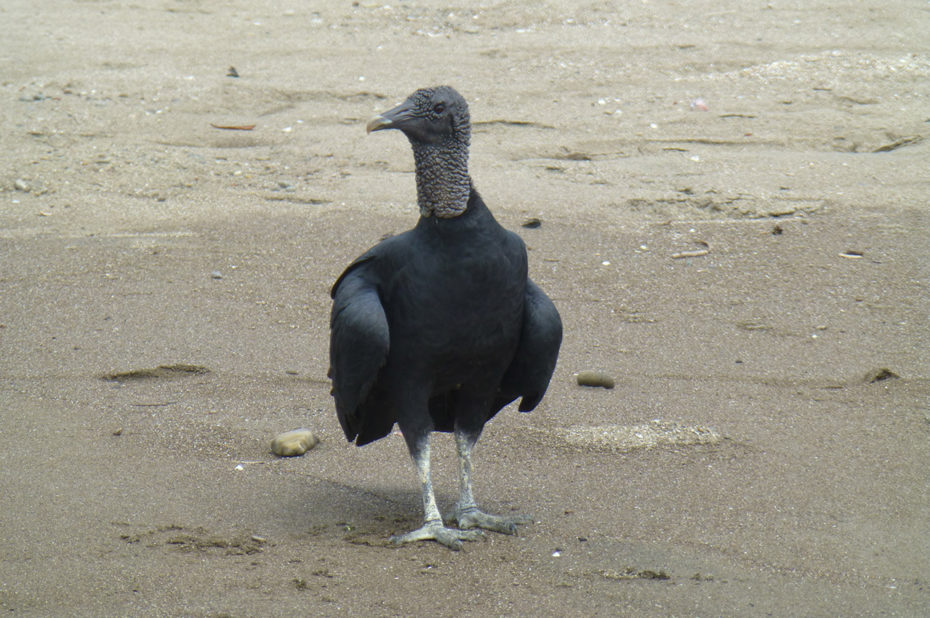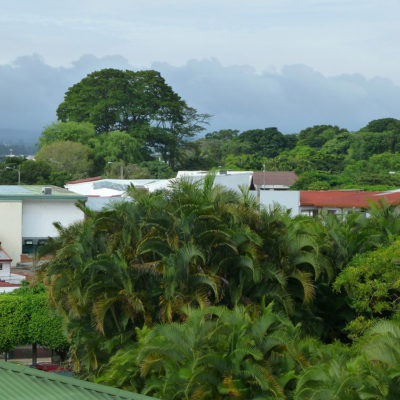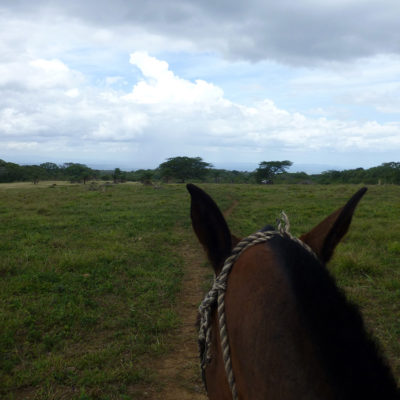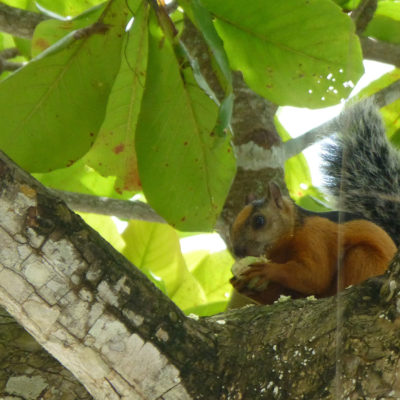
On the Nicoya Peninsula, Cabo Blanco, the first protected site in the country, was created in 1963 and elevated to the rank of nature reserve in 1974. It protects 1,272 hectares of land and 1,700 hectares of sea. Originally, it was an “absolute” reserve, i.e. closed to the public. Only the eastern part of the tropical forests that cover the hilly tip of the peninsula is accessible. It is populated by monkeys, anteaters, coatis and deer. Offshore, the rocks of Isla Cabo Blanco are bleached with guano deposited by the colonies of seabirds that nest there, including frigatebirds and brown boobies.
Within the Barcelò Tambor hotel complex, you can discover a small reserve of macaws of all kinds, and in particular the magnificent red macaw, or Macao macaw. It has blue and yellow wings, a long red tail and a white head. The easiest way to observe it at close range is when it is in a tree in full feeding. Once the Scarlet macaw has chosen a mate, it remains faithful for life. A pair of Scarlet macaws is very demonstrative in love; they never separate, except during brooding. The Scarlet macaw flies spectacularly between its resting place and its feeding site. It is exclusively vegetarian and feeds on fruits, palm nuts and seeds.
Click on the picture to enlarge it and discover its caption.
